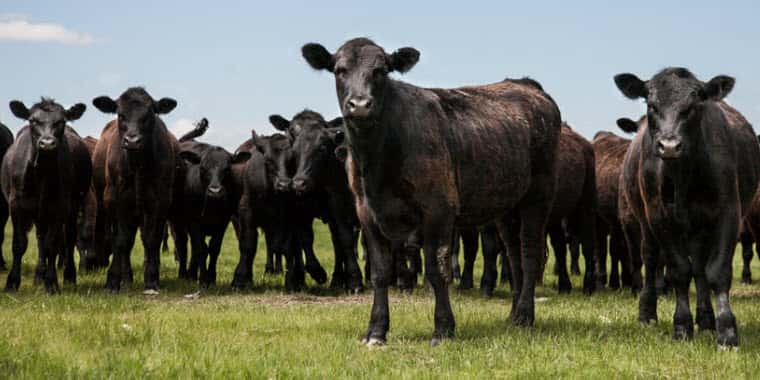by Derrell Peel, Oklahoma State University Extension Livestock Marketing Specialist
The beef cow herd began recent expansion in 2014 growing 0.75 percent followed by more significant growth in 2015 (2.95 percent) and in 2016 (3.46 percent). From the January, 2014 low of 29.1 million head, the herd has expanded by 2.1 million head to the January, 2017 level of 31.2 million head. There are numerous indicators that herd expansion continued in 2017. The answer will come with the Cattle report issued by USDA-NASS in late January.
Replacement Heifers
The potential for herd growth starts with available replacement heifers. On January 1, 2017, 6.4 million replacement heifers were reported, representing 20.6 percent of the beef cow inventory. This was the third largest replacement heifer percentage, down just slightly from the two prior years. Of the total replacement heifers, 4.0 million were expected to calve in 2017. This was a record number of reported heifers calving since this data became available in 2001. These numbers confirm considerable potential for herd expansion and indicated producer intentions to continue adding to cow inventories. The question is whether producers have adjusted their intentions during the year. Open replacement heifers can be easily diverted into feeder markets if producers’ expectations have changed.
Heifer Retention
Changes in the beef cow herd are a function of the pace of heifer retention relative to the pace of cull cow slaughter. Heifer slaughter provides a delayed indication of heifer retention. Year to date heifer slaughter through late November was up 12.3 percent year over year. This follows from the jump in quarterly heifers on feed, up 10.6 percent in July and 13.0 percent year over year in October. However, even with the increase in heifer slaughter, the ratio of steer to heifer slaughter remains well above historical levels. Heifer slaughter was squeezed dramatically in 2015 and 2016 and, although it is increasing, has yet to return to normal levels relative to steer slaughter.
Cull Cows
Beef cow slaughter is up 10.1 percent in 2017 through late November. This follows a 13.7 percent year over year increase in cow slaughter in 2016. Part of the increase in cow slaughter is simply due to herd growth since 2014. However, like heifer slaughter, beef cow slaughter was sharply reduced in 2014-2016 as a part of jumpstarting herd expansion. Net beef cow culling was a record low 7.6 percent in 2015. Sustained below-average culling rates in 2014-2016 were possible following above average culling rates from 2008-2013, including drought-forced liquidation that removed many older cows, and allowed a period of reduced culling as herd expansion began. If the current beef cow slaughter pace continues through the end of the year, the 2017 beef cow culling rate will be 9.0 percent, still below but close to the long-term average of 9.6 percent. In other words, the industry is returning to normal beef cow culling rates. Both heifer and beef cow slaughter are consistent with continued but slowing herd expansion.
What Lies Ahead?
There seems little doubt that herd expansion continued in 2017, albeit at a slower pace than 2016. The jump in heifer and beef cow slaughter both reflect a return to more typical relative slaughter rates. I am currently estimating that the 2018 beef cow herd will be up 1.5-2.0 percent over January, 2017. Expansion rates above or below this level are possible, though expansion above 2.5 percent is difficult to reconcile with current numbers. Expansion slower than 1.5 percent is, of course, possible but it would suggest that an unusually large percentage of pregnant heifers available on January 1 did not in fact enter the herd. This begs the question of what happened to them in that situation. The annual cattle inventory numbers in the January report are eagerly anticipated, not only to confirm what happened to the beef cow herd in 2017 but for indications of what lies ahead in 2018.
Photo: NAN




